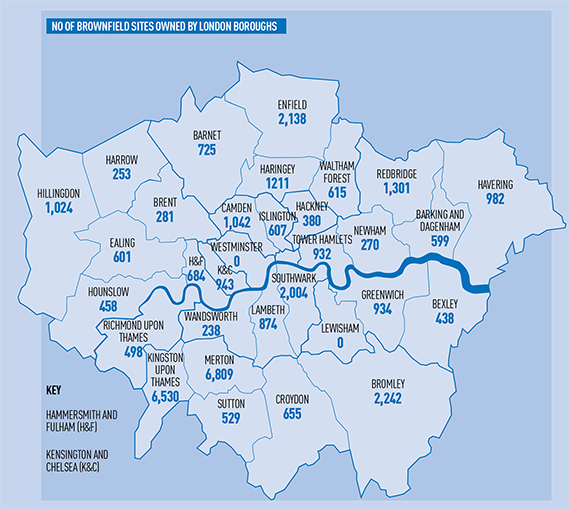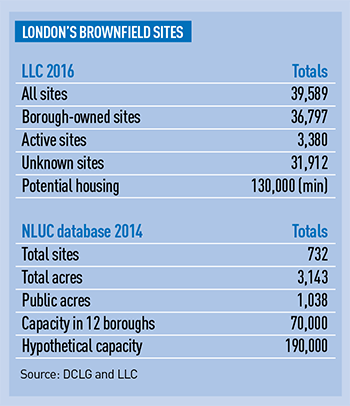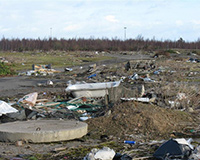 London’s boroughs own a combined total of 36,797 brownfield sites, according to analysis of London Land Commission data.
London’s boroughs own a combined total of 36,797 brownfield sites, according to analysis of London Land Commission data.
Of the 39,589 sites in London identified by the commission so far, 93% are owned by local authorities, while only 8% of sites are under the ownership of public bodies, such as the NHS or Transport for London.
Revealing brownfield land under public ownership has been a key priority of both the Greater London Authority and national government.
The London Land Commission, chaired by London mayor Boris Johnson and housing and planning minister Brandon Lewis, appointed Savills in July 2015 to compile the preliminary stages of a so-called “Domesday Book” of all brownfield land owned by public bodies in London.
It has identified 40,000 sites around the capital, which, the commission says, could deliver a minimum of 130,000 homes.

But details within the register on sites are less forthcoming. A total of 3,380 sites are listed as active and 1,505 are inactive, while the status of the remainder, the vast majority, is unknown, as are current uses, for instance office, educational or residential.
The number of sites by borough also ranges from a low of 270 in Newham, to 6,809 in Merton. Two boroughs, Westminster and Lewisham, have yet to report any sites.
Under the Housing and Planning Bill all local authorities will be required to keep up-to-date registers of all publicly owned brownfield land that could be suitable for housing development. However, while local councils have been keen to utilise surplus brownfield sites, they have often struggled to balance obtaining best value with maximising affordable housing delivery.
The data is slowly building on previous DCLG public brownfield statistics, though has yet to revise up the potential housing numbers for public owned land.
Statistics were previously recorded in the National Land Use Database of Previously Developed Land, which was last published in October 2014.
The dataset, which was heavily caveated and largely incomplete, listed brownfield data from 12 participating London boroughs, identifying publicly owned land and its capacity for housing development.
At the last count, there were 1,038 publicly owned acres of land across the 12 boroughs with an estimated housing capacity of more than 70,000 homes.
This meant that publicly owned brownfield land across the capital had the potential for more than 190,000 homes.
New plans, according to the LLC, will identify how to obtain the best value from the mapped land, and how adjoining sites can be grouped together to maximise house building.
The future mayor will also be interested in the findings, as both Sadiq Khan and Zac Goldsmith have said they will not allow house building on green belt sites.
To send feedback, email alex.peace@estatesgazette.com or tweet @EGAlexPeace or @estatesgazette











